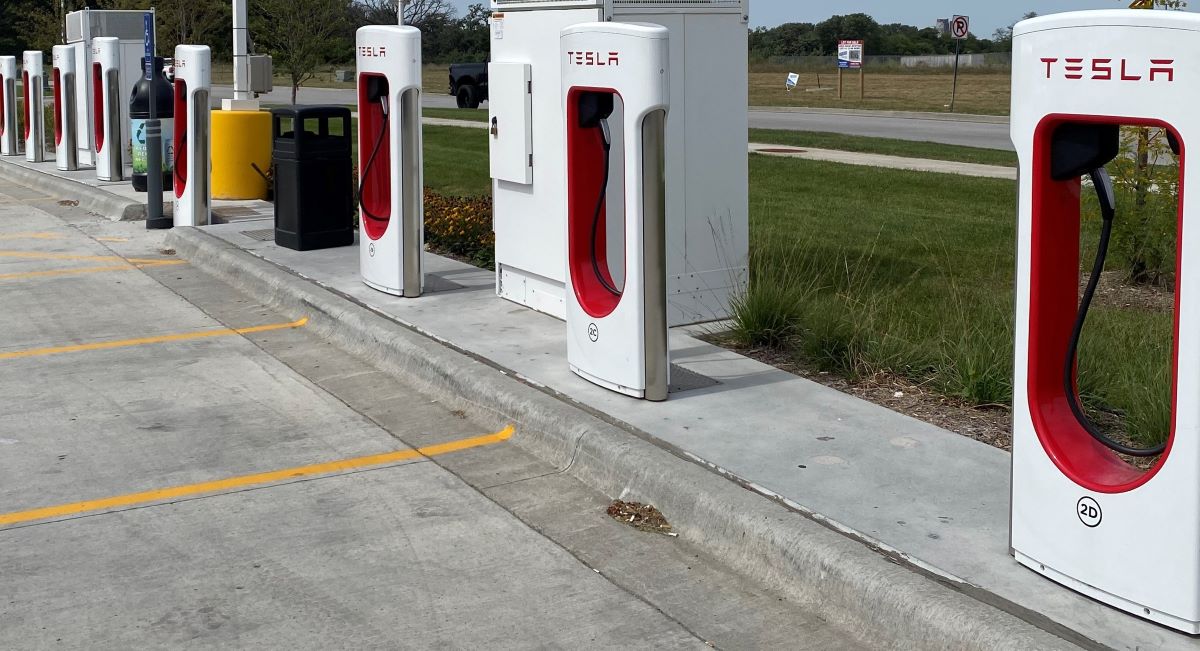“It’s a double problem,” said Zhaoyu Wang, an Iowa State University professor of electrical and computer engineering. “There’s no electricity. And you can’t go anywhere.”
The federal government’s Joint Office of Energy and Transportation is asking Wang and his research collaborators to study potential solutions. The work will be supported by a two-year, $1.2 million grant. Research partners will also contribute $300,000 of cost-share funding.
Goals for the project include:
- Designing charging station resilience plans for Ames; Dayton, Ohio; and Indianapolis, Indiana
- Studying three technologies that could keep vehicle chargers working during power outages
- Writing plans for quickly restoring power to electric vehicle charging stations after outages
- Adding data about electrical vehicle charging stations to the government’s Geospatial Energy Mapper, an online toolbox with layers of data to help with clean energy planning
- Reducing the outage rate of chargers by 75% and reducing power restoration time by 50%
Working with Wang to do all that are Ian Dobson, the Arend J. and Verna V. Sandbulte Professor of Engineering, and Anne Kimber, a research professor and director of Iowa State’s Electric Power Research Center. Project partners are the U.S. Department of Energy’s Argonne National Laboratory near Chicago; the AES Corp., a global energy company with operations in Indiana and Ohio, and Ames Municipal Utilities.
RECHARGE your ride
The researchers are calling their project RECHARGE. (That’s short for Resilience Evaluation and Enhancement of Charging Stations with Hierarchical Adaptive Restoration of Grids and Distributed Energy Resources.)
Wang said the project will include two primary steps:
“First we need to evaluate EV charging stations’ resiliency in extreme weather events,” he said. “For example, in storms and power outages, charging stations may be out as well. Now you may not be able to drive because of a lack of working charging stations.”
The researchers will analyze multiple years of real outage data from Ames, Dayton and Indianapolis to see how often there are problems and how long it takes to recover from them. The analysis will be the basis for “resilience scores” assigned to each charging station.
The scores will help determine which charging stations need reinforcement, Wang said.
The second step will be developing technologies to provide that reinforcement. The researchers have three ideas in mind: trucks delivering pre-charged batteries to charging stations after a storm; charging stations with onsite solar power and battery storage; and “double feeding” power to charging stations with redundant lines from different substations.
While the study won’t include pilot demonstrations of the three technologies, Wang said it will provide useful information as utilities plan for a more electrified future.
“This will help us understand resilience levels for electric vehicle charging stations,” Wang said. “If we want to build more of them, the resilience scores can help determine where they’re built. This is another piece of information.”
It’s important information, Wang said, “because this is critical infrastructure for daily transportation.”
– 30 –


